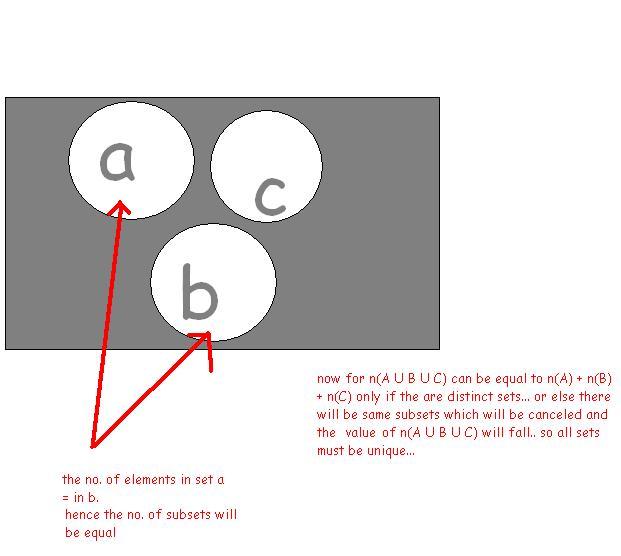\left|A\cup B\cup C \right|=\sum{|A|}-\sum{|A\cap B|}+|A\cap B\cap C|
Again as before, let |C|=d and |A\cup B\cup C| =x - and again as before d=101 and x=102.
So from the 1st eqn our |A\cap B\cap C| ={|A\cup B\cup C}|-\left(\sum{|A|} \right)+\sum{\left|A\cap B \right|}.
I need to minimise \sum{\left|A\cap B \right|}
I have the following information at hand :- If I see set A as a reference, then there are just 2 elements (not belonging to A ) in the entire union set of A,B,C - since A\cup B\cup C=102.
Let m of these "new " elements be in set B.
Clearly 0\le m\le 2.
And also let n of these elements be in set C.
Let m≥n - then 100-m<101-n.
So our \sum{\left|A\cap B \right|}=(100-m)+n+(101-n)+100-m =301-2m.
For this to be minimum m=2, so finally the correct answer turns out to be 98.
Thank GOD!
